Hwichan Kim
Pruning Multilingual Large Language Models for Multilingual Inference
Sep 25, 2024Abstract:Multilingual large language models (MLLMs), trained on multilingual balanced data, demonstrate better zero-shot learning performance in non-English languages compared to large language models trained on English-dominant data. However, the disparity in performance between English and non-English languages remains a challenge yet to be fully addressed. A distinctive characteristic of MLLMs is their high-quality translation capabilities, indicating an acquired proficiency in aligning between languages. This study explores how to enhance the zero-shot performance of MLLMs in non-English languages by leveraging their alignment capability between English and non-English languages. To achieve this, we first analyze the behavior of MLLMs when performing translation and reveal that there are large magnitude features that play a critical role in the translation process. Inspired by these findings, we retain the weights associated with operations involving the large magnitude features and prune other weights to force MLLMs to rely on these features for tasks beyond translation. We empirically demonstrate that this pruning strategy can enhance the MLLMs' performance in non-English language.
A Single Linear Layer Yields Task-Adapted Low-Rank Matrices
Mar 22, 2024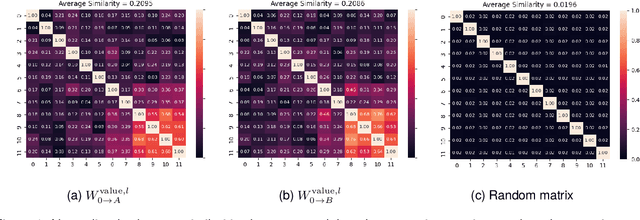
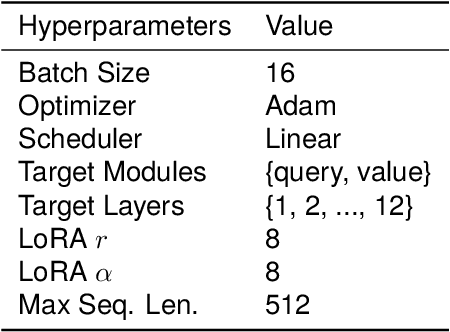

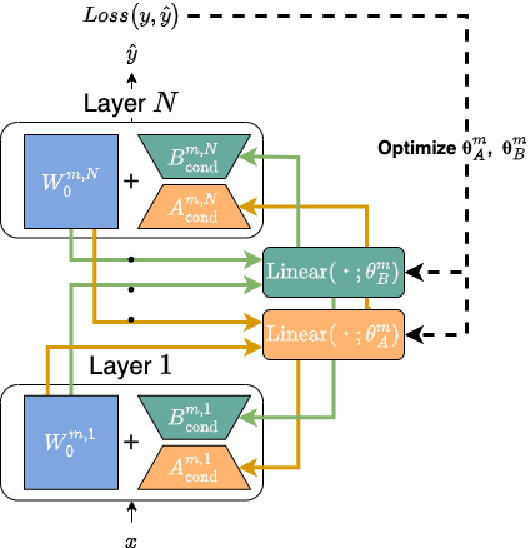
Abstract:Low-Rank Adaptation (LoRA) is a widely used Parameter-Efficient Fine-Tuning (PEFT) method that updates an initial weight matrix $W_0$ with a delta matrix $\Delta W$ consisted by two low-rank matrices $A$ and $B$. A previous study suggested that there is correlation between $W_0$ and $\Delta W$. In this study, we aim to delve deeper into relationships between $W_0$ and low-rank matrices $A$ and $B$ to further comprehend the behavior of LoRA. In particular, we analyze a conversion matrix that transform $W_0$ into low-rank matrices, which encapsulates information about the relationships. Our analysis reveals that the conversion matrices are similar across each layer. Inspired by these findings, we hypothesize that a single linear layer, which takes each layer's $W_0$ as input, can yield task-adapted low-rank matrices. To confirm this hypothesis, we devise a method named Conditionally Parameterized LoRA (CondLoRA) that updates initial weight matrices with low-rank matrices derived from a single linear layer. Our empirical results show that CondLoRA maintains a performance on par with LoRA, despite the fact that the trainable parameters of CondLoRA are fewer than those of LoRA. Therefore, we conclude that "a single linear layer yields task-adapted low-rank matrices."
Learning How to Translate North Korean through South Korean
Jan 27, 2022
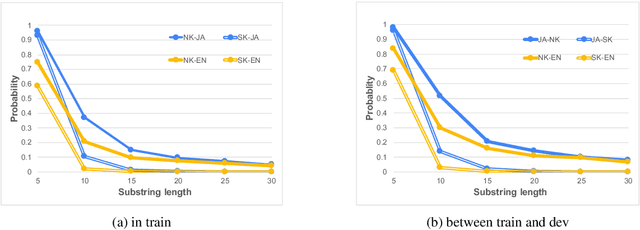
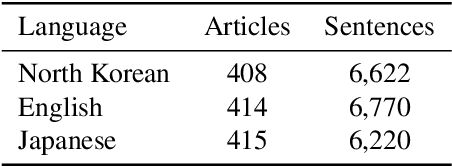

Abstract:South and North Korea both use the Korean language. However, Korean NLP research has focused on South Korean only, and existing NLP systems of the Korean language, such as neural machine translation (NMT) models, cannot properly handle North Korean inputs. Training a model using North Korean data is the most straightforward approach to solving this problem, but there is insufficient data to train NMT models. In this study, we create data for North Korean NMT models using a comparable corpus. First, we manually create evaluation data for automatic alignment and machine translation. Then, we investigate automatic alignment methods suitable for North Korean. Finally, we verify that a model trained by North Korean bilingual data without human annotation can significantly boost North Korean translation accuracy compared to existing South Korean models in zero-shot settings.
 Add to Chrome
Add to Chrome Add to Firefox
Add to Firefox Add to Edge
Add to Edge